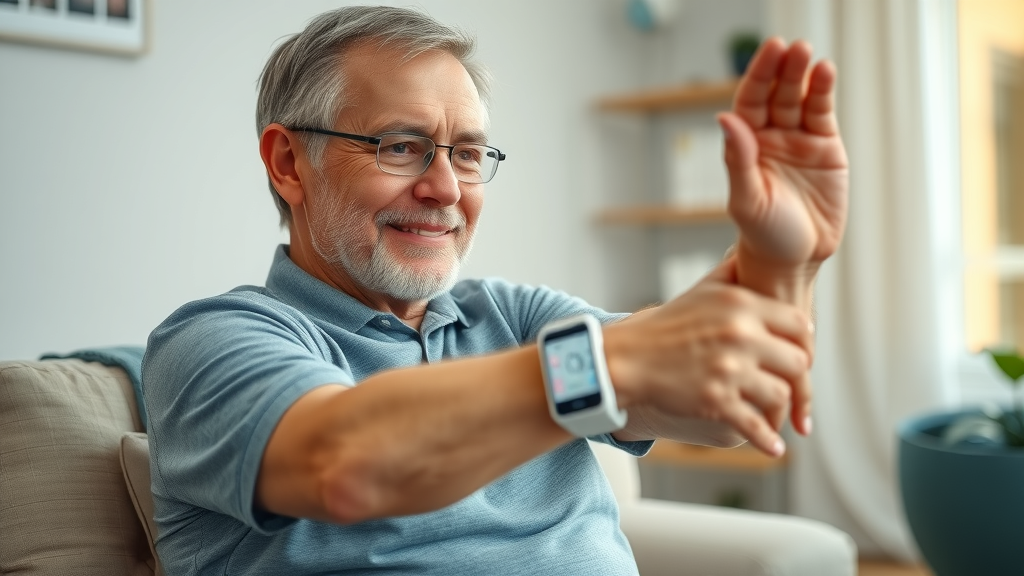“Remote Therapeutic Monitoring (RTM) is reshaping the physician’s toolkit, creating unprecedented opportunities for proactive, data-driven patient care.”
Are you harnessing the full potential of RTM for physicians? Discover how Remote Therapeutic Monitoring is revolutionizing chronic disease management, enabling more targeted interventions, and driving measurable improvements in both patient satisfaction and clinical workflow. If you’re searching for real-world applications and best practices to seamlessly adopt this modern technology in your practice—with compliance and ROI top of mind—you’re in the right place. Dive in to uncover actionable steps, common pitfalls to avoid, and why failing to leverage RTM could mean missing out on the next evolution in patient care.
Understanding RTM for Physicians: What Is Remote Therapeutic Monitoring?
- Introduction to RTM for physicians and its role in patient care: RTM for physicians stands at the intersection of medicine and technology, opening the door to continuous remote oversight of patients' therapeutic needs. Designed to bridge care gaps, RTM empowers clinicians to monitor patient adherence, symptoms, and therapy effectiveness beyond the office visit, using digital tools and patient-reported data. By integrating RTM into everyday practice, physicians can intervene sooner—well before minor setbacks become major health issues.
- Definition and distinction from RPM (Remote Patient Monitoring): While often confused, RTM for physicians fundamentally differs from Remote Patient Monitoring (RPM). RPM focuses on collecting physiological data—think blood pressure or glucose monitoring—whereas RTM collects a broader spectrum of therapeutic data, like medication adherence, physical therapy participation, and self-reported symptoms. This distinction lets physicians tailor therapy interventions and provide more holistic care.
- Regulatory landscape impacting RTM for physicians: The regulatory framework for RTM is evolving rapidly. In 2022, CMS introduced new CPT codes and guidance for RTM billing. The key is understanding compliance nuances: RTM covers both device-derived and self-reported therapeutic data and requires HIPAA-compliant platforms and documentation. Staying current on these regulations ensures smooth reimbursement and risk mitigation.

Why RTM for Physicians Is Transforming Patient Care Outcomes
- How RTM for physicians improves chronic disease management: By facilitating real-time tracking of therapy activities, symptoms, and medication adherence , RTM for physicians can drastically improve the continuity of care. Chronic conditions such as musculoskeletal disorders or COPD often require nuanced oversight, and RTM platforms make it possible to identify subtle changes in patient status well before complications arise. This allows for timely interventions, reducing hospital admissions and improving overall outcomes.
- Real-time data collection and its impact on care plans: Instant access to therapeutic data empowers physicians to adapt treatment strategies on the fly. Instead of waiting for the next in-office visit, clinicians can review trends in mobility exercises, medication use, or patient-reported responses and make evidence-based adjustments immediately. This feedback loop enhances the precision of care and provides reassurance to patients that their challenges are noticed and addressed quickly.
- Examples of improved follow-ups and patient compliance: RTM’s greatest strength may be its direct impact on follow-up care. By scheduling interventions based on real-world data, physicians can boost adherence, encourage active participation, and motivate patients to stick with their prescribed therapies. For example, patients recovering from orthopedic surgery who regularly report progress through RTM platforms often achieve better long-term mobility and satisfaction scores compared to those relying solely on traditional follow-ups.
Key Benefits of RTM for Physicians in Clinical Practice
- Enhanced patient engagement through regular monitoring: RTM keeps patients actively involved in their own health journeys. When patients understand that their progress and struggles are being continually observed—not just during periodic appointments—they’re more likely to stay motivated and comply with therapeutic recommendations.
- Data-driven decision support for better outcomes: The wealth of data collected from RTM platforms enables physicians to make more informed, personalized decisions. This can result in optimized therapy plans, precise medication adjustments, and the early detection of emerging complications—all driving better outcomes and patient trust.
- Facilitation of personalized care plans: RTM allows clinicians to tailor care based on real-time feedback, leading to more individualized treatment paths. For instance, a patient whose exercise logs show improvement can be safely advanced to the next phase of rehabilitation sooner, while those facing setbacks can receive modified guidance and support.

Implementing RTM for Physicians in Your Workflow
- Step-by-step overview of integrating RTM solutions: Successful RTM integration starts with a clear plan—define objectives, select appropriate RTM tools, and establish protocols for ongoing communication and data review. Begin with pilot programs targeting a specific patient group or condition for a manageable learning curve. Next, create workflows for daily data evaluation and clear escalation paths for clinical anomalies.
- Choosing the right RTM platforms and devices: Evaluate the market for RTM solutions designed specifically for physicians by considering criteria such as device interoperability, data security (HIPAA compliance), patient interface ease-of-use, and analytics dashboards. The best platforms also support bi-directional communication and can integrate with your practice’s EMR/EHR.
- Staff training and patient onboarding best practices: Dedicate time to staff education—everyone from front desk to clinical providers should understand the roles and responsibilities in RTM. Develop patient-friendly onboarding materials, offer live support during initial setup, and address common concerns (privacy, device unfamiliarity) proactively to drive engagement and smooth adoption.
| Platform | Device Compatibility | Data Analytics | EMR/EHR Integration | Patient Portal | HIPAA Compliance |
|---|---|---|---|---|---|
| RTM Pro Health | Wearables, Apps, Sensors | Advanced | Full | Yes | Yes |
| TheraConnect | Wearables, Mobile Devices | Standard | Partial | Yes | Yes |
| MedTrackRTM | Sensors, Apps | Comprehensive | Full | Yes | Yes |

RTM for Physicians: Reimbursement, Coding, and Compliance Essentials
- Overview of current RTM reimbursement policies for physicians: RTM billing is now supported by CMS through a suite of CPT codes, incentivizing physicians to adopt digital monitoring in their practices. Unlike RPM—which focuses on physiological parameters—RTM can cover therapeutic adherence, musculoskeletal progress, or medication management, broadening reimbursement opportunities.
- Key CPT codes and documentation requirements: Physicians must use precise coding such as CPT 98975, 98976, 98977, 98980, and 98981 to ensure proper reimbursement. Detailed patient logs, therapy data, and interaction notes should be maintained in the medical record to meet payer requirements and withstand audits.
- Compliance tips to mitigate legal and billing risks: To stay compliant, always use HIPAA-secure platforms, provide staff education on RTM billing nuances, and employ regular internal audits. Keeping comprehensive documentation not only protects against chargebacks but also reinforces a culture of safety and professionalism in care delivery.
People Also Ask About RTM for Physicians
How does RTM for physicians differ from RPM?
- RTM for physicians focuses on therapeutic monitoring and collects data on non-physiological parameters, like patient-reported outcomes, medication use, and therapy adherence. In contrast, Remote Patient Monitoring (RPM) is limited to objective, physiological metrics (such as heart rate or blood pressure). RTM’s unique value lies in overseeing interventions related to medication adherence, musculoskeletal health, and therapy participation, offering a broader clinical picture than RPM.
What conditions can RTM for physicians help manage?
- RTM for physicians is particularly effective for managing chronic musculoskeletal disorders , supporting therapeutic adherence in physical rehabilitation, and overseeing respiratory conditions like asthma and COPD. As digital therapeutic tools advance, RTM’s role continues to expand, encompassing neurological disorders, behavioral health support, and complex medication management.

What are the data privacy requirements for RTM for physicians?
- Physicians must ensure RTM solutions meet HIPAA and other healthcare data security standards . This includes using platforms with end-to-end encryption, access controls, routine security audits, and robust protocols for safeguarding sensitive health data. Patients’ trust depends on your practice’s vigilance and adherence to best-in-class privacy practices.
Overcoming Common Challenges in Adopting RTM for Physicians
- Addressing physician and staff resistance: Introducing RTM for physicians may face pushback due to workflow changes or perceived technology burdens. Education, hands-on demos, and showcasing early clinical wins can foster buy-in and demystify the process for teams at all levels.
- Streamlining patient onboarding: Patient engagement is crucial. Simplify onboarding with clear guides, offer live support for setup, and address privacy concerns head-on. Emphasizing the benefits—like more convenient care and real-time feedback—helps patients embrace RTM tools faster.
- Integrating RTM with existing EMR/EHR systems: Seamless integration ensures RTM data becomes part of the standard clinical record rather than an isolated workflow. Work with RTM providers who offer robust, customizable API connections and ensure staff are trained on new data streams within the EMR/EHR.
- Cost management and maximizing practice ROI: Upfront investment in RTM platforms can be offset by improved patient retention, reduced complications, and new revenue streams through billing codes. Monitor ROI by analyzing both clinical and financial performance quarterly, refining processes as needed.

Case Study: RTM for Physicians Leading to Improved Patient Outcomes
- Example of musculoskeletal therapy management using RTM: Consider a patient recovering from knee replacement surgery. Using an RTM platform, the physician tracks daily exercise completion, self-reported pain levels, and mobility milestones. Sudden changes—such as missed exercises or an increase in pain—trigger alerts for timely telehealth interventions, keeping the recovery on track.
- Impact on patient satisfaction and clinical metrics: In this scenario, post-implementation data revealed a 20% increase in patient satisfaction scores and fewer complications compared to the prior year’s non-RTM cohort. Clinicians noted a rise in therapy completion rates and a decrease in unscheduled hospital visits.
- Physician perspectives on workflow efficiency: Physicians involved in the pilot program highlighted time savings and reduced administrative burdens. With RTM, they spent less time chasing down missed appointments and more time delivering proactive, targeted interventions—bringing new efficiency to their practice.

Best Practices and Tips for Physicians Utilizing RTM
- Start with a pilot group: Select a manageable patient population—such as those undergoing physical rehabilitation or medication management—to test RTM workflows before scaling practice-wide.
- Prioritize patient communication and feedback: Maintain open lines of dialogue. Solicit patient feedback on RTM tools, processes, and perceived value to strengthen engagement and identify areas for improvement.
- Regularly review and act on RTM dashboard insights: Schedule dedicated times for physicians or care teams to assess patient dashboards, address alerts promptly, and make timely care plan adjustments.
- Engage multidisciplinary teams: RTM works best when nurses, therapists, and IT staff collaborate, ensuring holistic patient support and smooth technology operations.
Frequently Asked Questions About RTM for Physicians
- Who can bill for RTM services in a physician group? Licensed clinical staff under physician supervision—including nurse practitioners, clinical therapists, and physician assistants—can bill for RTM services as part of a physician group, subject to compliance with scope-of-practice and payer guidelines.
- What kind of devices qualify for RTM data collection? Devices must support secure, accurate collection of therapeutic data (e.g., wearables for musculoskeletal activity, smart inhalers, mobile applications for medication adherence) and meet FDA and HIPAA guidelines. Always confirm platform certification before onboarding.
- How do patients interact with RTM platforms? Patients typically receive instructions via user-friendly mobile apps or web portals, logging daily therapy data, completing symptom surveys, or syncing wearable data. Most platforms send reminders, offer feedback, and flag anomalies, making engagement straightforward even for those less familiar with digital health technology.
Summary: Championing Superior Patient Care Through RTM for Physicians
- RTM for physicians is the future of proactive, personalized care—driving superior clinical outcomes and patient satisfaction.
- Embrace RTM today to stay ahead of regulatory trends and maximize your practice’s impact.
- The landscape for digital therapeutics continues to evolve; ongoing adoption ensures your practice remains at the forefront of quality care delivery.
 Add Row
Add Row  Add
Add 



Write A Comment